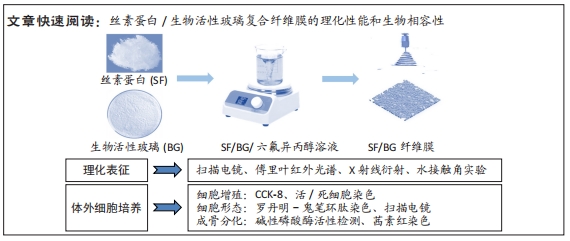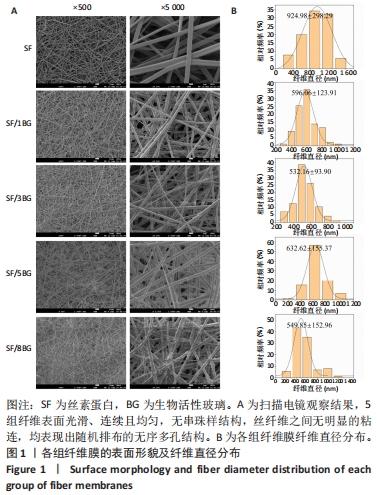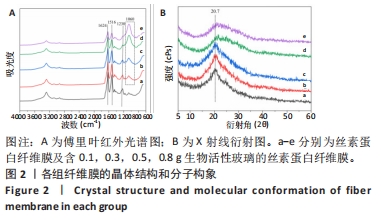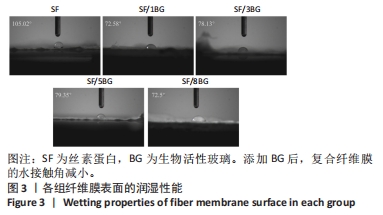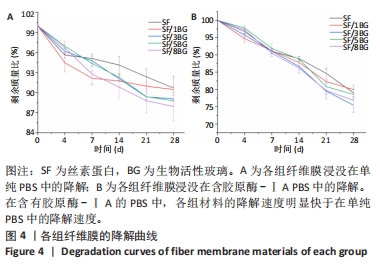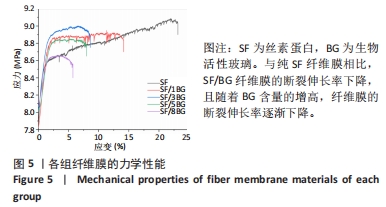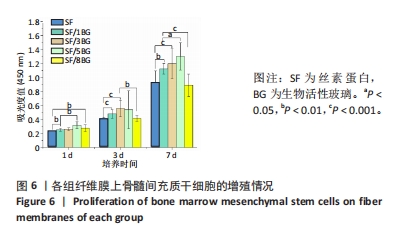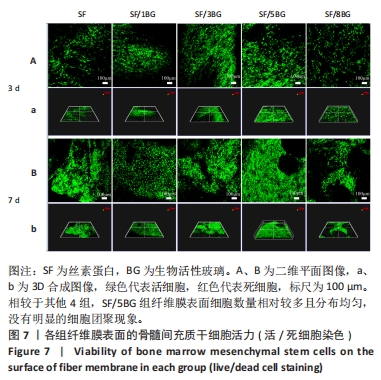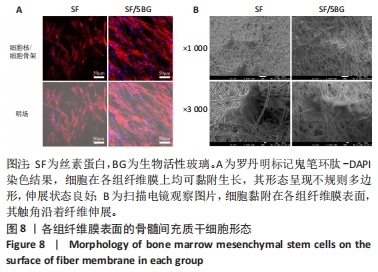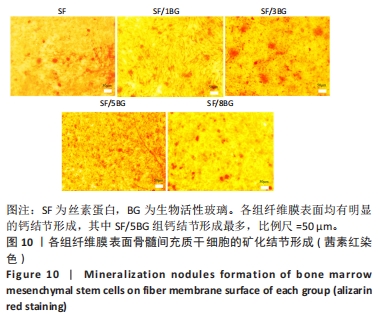[1] APRILE P, LETOURNEUR D, SIMON-YARZA T. Membranes for Guided Bone Regeneration: A Road from Bench to Bedside. Adv Healthc Mater. 2020;9(19):e2000707.
[2] REN Y, FAN L, ALKILDANI S, et al. Barrier Membranes for Guided Bone Regeneration (GBR): A Focus on Recent Advances in Collagen Membranes. Int J Mol Sci. 2022;23(23):14987.
[3] LIANG H, YIN J, MAN K, et al. A long-lasting guided bone regeneration membrane from sequentially functionalised photoactive atelocollagen. Acta Biomater. 2022;140:190-205.
[4] LI Z, DU T, GAO C, et al. In-situmineralized homogeneous collagen-based scaffolds for potential guided bone regeneration. Biofabrication. 2022;14(4):10.1088/1758-5090/ac8dc7.
[5] QIAN S, ZHAO B, MAO J, et al. Biomedical applications of Janus membrane. Biomed Technol. 2023;2:58-69.
[6] 赵文俊,陈宇.引导组织/骨再生牙周功能梯度膜的研究进展[J].国际口腔医学杂志,2021,48(4):391-397.
[7] LIN D, CHAI Y, MA Y, et al. Rapid initiation of guided bone regeneration driven by spatiotemporal delivery of IL-8 and BMP-2 from hierarchical MBG-based scaffold. Biomaterials. 2019;196:122-137.
[8] ZHOU Z, CUI J, WU S, et al. Silk fibroin-based biomaterials for cartilage/osteochondral repair. Theranostics. 2022;12(11):5103-5124.
[9] WANG Z, LIN M, XIE Q, et al. Electrospun silk fibroin/poly(lactide-co-ε-caprolactone) nanofibrous scaffolds for bone regeneration. Int J Nanomedicine. 2016;11:1483-1500.
[10] BRAUER DS. Bioactive glasses-structure and properties. Angew Chem Int Ed Engl. 2015;54(14):4160-4181.
[11] GUPTA S, MAJUMDAR S, KRISHNAMURTHY S. Bioactive glass: A multifunctional delivery system. J Control Release. 2021;335:481-497.
[12] VERMEULEN S, TAHMASEBI BIRGANI Z, HABIBOVIC P. Biomaterial-induced pathway modulation for bone regeneration. Biomaterials. 2022;283:121431.
[13] 吕孝帅,李正茂,杨雪超.生物活性玻璃58S/丝素蛋白膜促进人牙髓干细胞增殖与分化[J].牙体牙髓牙周病学杂志,2015,25(10): 577-583.
[14] FENBO M, XINGYU X, BIN T. Strontium chondroitin sulfate/silk fibroin blend membrane containing microporous structure modulates macrophage responses for guided bone regeneration. Carbohydr Polym. 2019;213:266-275.
[15] WUBNEH A, TSEKOURA EK, AYRANCI C, et al. Current state of fabrication technologies and materials for bone tissue engineering. Acta Biomater. 2018;80:1-30.
[16] XING J, ZHANG M, LIU X, et al. Multi-material electrospinning: from methods to biomedical applications. Mater Today Bio. 2023;21:100710.
[17] FENG X, LI J, ZHANG X, et al. Electrospun polymer micro/nanofibers as pharmaceutical repositories for healthcare. J Control Release. 2019; 302:19-41.
[18] PENG S, JIN G, LI L, et al. Multi-functional electrospun nanofibres for advances in tissue regeneration, energy conversion & storage, and water treatment. Chem Soc Rev. 2016;45(5):1225-1241.
[19] SANTOS MS, CARVALHO MS, SILVA JC. Recent Advances on Electrospun Nanofibers for Periodontal Regeneration. Nanomaterials (Basel). 2023; 13(8):1307.
[20] DENCHAI A, TARTARIN D, MELE E. Cellular Response to Surface Morphology: Electrospinning and Computational Modeling. Front Bioeng Biotechnol. 2018;6:155.
[21] CHI J, WANG M, CHEN J, et al. Topographic Orientation of Scaffolds for Tissue Regeneration: Recent Advances in Biomaterial Design and Applications. Biomimetics (Basel). 2022;7(3):131.
[22] XUE J, WU T, DAI Y, et al. Electrospinning and Electrospun Nanofibers: Methods, Materials, and Applications. Chem Rev. 2019;119(8): 5298-5415.
[23] ORASH MAHMOUD SALEHII A, NOURBAKHSH MS, RAFIENIA M, et al. Corneal stromal regeneration by hybrid oriented poly (ε-caprolactone)/lyophilized silk fibroin electrospun scaffold. Int J Biol Macromol. 2020; 161:377-388.
[24] KAUSHIK S, THUNGON PD, GOSWAMI P. Silk Fibroin: An Emerging Biocompatible Material for Application of Enzymes and Whole Cells in Bioelectronics and Bioanalytical Sciences. ACS Biomater Sci Eng. 2020;6(8):4337-4355.
[25] XU C, XIA Y, WANG L, et al. Polydopamine-assisted immobilization of silk fibroin and its derived peptide on chemically oxidized titanium to enhance biological activity in vitro. Int J Biol Macromol. 2021;185: 1022-1035.
[26] SINGH BN, PRAMANIK K. Generation of bioactive nano-composite scaffold of nanobioglass/silk fibroin/carboxymethyl cellulose for bone tissue engineering. J Biomater Sci Polym Ed. 2018;29(16):2011-2034.
[27] KIM OH, PARK JH, SON JI, et al. Bone Marrow Mesenchymal Stromal Cells on Silk Fibroin Scaffolds to Attenuate Polymicrobial Sepsis Induced by Cecal Ligation and Puncture. Polymers (Basel). 2021;13(9):1433.
[28] BHARADWAZ A, JAYASURIYA AC. Recent trends in the application of widely used natural and synthetic polymer nanocomposites in bone tissue regeneration. Mater Sci Eng C Mater Biol Appl. 2020;110:110698.
[29] BENTO R, GADDAM A, FERREIRA JMF. Sol-Gel Synthesis and Characterization of a Quaternary Bioglass for Bone Regeneration and Tissue Engineering. Materials (Basel). 2021;14(16):4515.
[30] CRUSH J, HUSSAIN A, SEAH KTM, et al. Bioactive Glass: Methods for Assessing Angiogenesis and Osteogenesis. Front Cell Dev Biol. 2021;9: 643781.
[31] El-RASHIDY AA, ROETHER JA, HARHAUS L, et al. Regenerating bone with bioactive glass scaffolds: A review of in vivo studies in bone defect models. Acta Biomater. 2017;62:1-28.
[32] CHENG J, JUN Y, QIN J, et al. Electrospinning versus microfluidic spinning of functional fibers for biomedical applications. Biomaterials. 2017;114:121-143.
[33] SUN W, GREGORY DA, TOMEH MA, et al. Silk Fibroin as a Functional Biomaterial for Tissue Engineering. Int J Mol Sci. 2021;22(3):1499.
[34] WANG L, ZHANG Y, XIA Y, et al. Photocross-linked silk fibroin/hyaluronic acid hydrogel loaded with hDPSC for pulp regeneration. Int J Biol Macromol. 2022;215:155-168.
[35] MORAN MC, RUANO G, CIRISANO F, et al. Mammalian cell viability on hydrophobic and superhydrophobic fabrics. Mater Sci Eng C Mater Biol Appl. 2019;99:241-247.
[36] CIRALDO FE, BOCCARDI E, MELLI V, et al. Tackling bioactive glass excessive in vitro bioreactivity: Preconditioning approaches for cell culture tests. Acta Biomater. 2018;75:3-10.
[37] RAHAMAN MN, DAY DE, BAL BS, et al. Bioactive glass in tissue engineering. Acta Biomater. 2011;7(6):2355-2373.
[38] ZHAO T, ZHANG J, GAO X, et al. Electrospun nanofibers for bone regeneration: from biomimetic composition, structure to function. J Mater Chem B. 2022;10(32):6078-6106.
[39] LUO X, ZHANG S, LUO B, et al. Engineering collagen fiber templates with oriented nanoarchitecture and concerns on osteoblast behaviors. Int J Biol Macromol. 2021;185:77-86.
[40] WANG X, PENG Y, WU Y, et al. Chitosan/silk fibroin composite bilayer PCL nanofibrous mats for bone regeneration with enhanced antibacterial properties and improved osteogenic potential. Int J Biol Macromol. 2023;230:123265.
|
